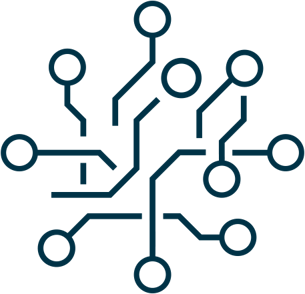Seeking to thrive and remain competitive in a highly digitalized world, it is imperative that businesses adopt strategies like agile cloud computing platforms, shared storage and data, dynamic applications, and more. Yet no matter the strategy, data security services remain essential in enabling digital transformation-driven initiatives.
According to CyberEdge Group (2021), 86.2% of surveyed organizations were affected by at least one successful cyberattack in 2020. Therefore, aside from operations, how organizations deal with cybersecurity risks should also be transformed. Your data protection service provider will tell you that dealing with new risks via traditional security practices is no longer feasible.
While DevOps practices have been recognized for their speed, scalability, and functionality, security is regarded as a friction point that is handled separately from this process. The logical extension to address this issue is DevSecOps: incorporating security throughout the delivery lifecycle rather than treating it as a separate and potentially optional concern. There are several benefits that DevSecOps can bring to an organization:
1. Cost-effective Software Delivery
Security flaws, like any other kind of software system defect, are much cheaper to fix when identified early rather than after the software has been completed. Addressing defects in applications at the beginning is far less time-consuming than during the implementation phase, which requires a security fix to be forced in later.
Moreover, it can be helpful for a security expert to be involved in the decision-making process when new components are being evaluated for purchase to ensure that the proposed components will be able to meet the project's long-term security needs and benefits. Anything that a team can do to shift security left in their project lifecycle will result in reducing costs to the organization.
2. Eliminate Human-error Security Risks and Meet Compliance Standards
DevSecOps relies heavily on automation to minimize manual administration. By implementing automation tools at the start of the life cycle, organizations can eliminate both human-error risks and operational overheads.
Also, DevSecOps can leverage automation paradigms for various compliance checks. Therefore, organizations can design an environment of continuous compliance, which includes automated processes and workflows, to turn compliance into a requirement rather than an afterthought in the minds of developers. With DevSecOps, organizations can achieve and maintain compliance via the following practices: continuous compliance feedback, preventative monitoring and feedback loops, and continuous audits.
3. Improved Overall Security
DevSecOps deploys security tools from the beginning of the development cycle, which means that security issues are detected by reviewing, auditing, scanning, and testing code throughout the software delivery cycle. These issues are addressed as soon as they are identified and fixed before additional dependencies are introduced. Thanks to these functions of DevSecOps, overall security quality is enhanced when protective tools are introduced flexibly and implemented early in the cycle.
4. Improved Overall Quality
DevSecOps introduces evaluation tools such as Static Application Security Testing (SAST) and Dynamic Application Security Testing (DAST) earlier in the development cycle. While SAST helps to scan the applications to spot potential vulnerabilities at code commits before code is merged, DAST can test running web applications for known runtime vulnerabilities. Shifting left on these tools in the pipeline can improve software quality and system health as vulnerabilities are addressed timely and sufficiently in the cycle.
5. Minimize Downtime, Reduce Lead-time and Faster Go-lives
DevSecOps is well-recognized for its efficiency in timely handling security defects, as the issues are quickly isolated and tracked to their source. The features of DevSecOps to accelerate go-lives include consumable, self-service security capabilities, built-in security guardrails, enablement for monitoring, and targeted feedback provision. It can detect cyber risks early in the development cycle, thus drastically shortening lead times before go-lives, allowing organizations to reach their audiences ahead of competitors.
6. Potentially Avoid Negative Publicity due to Security Breaches
Software is often built from as much as open-source code, which could include hundreds of discrete libraries in a single software. DevSecOps can help avoid using these vulnerable dependencies and libraries from open-source packages as it allows development teams to continuously discover and catch problems during the development phase, long before deploying applications.
Automation from DevSecOps enables organizations to keep track of all open-source components in use, identify any related risks, and implement effective mitigation procedures.
7. Prevent Unauthorized Access
Critical and sensitive data is produced in the development environment. It is impossible to ensure secured software without considering how to collect and validate passwords, as well as how to prevent unauthorized access. While DevOps speeds up release cycles, there is a risk that data privacy is neglected in the process. Critical API access tokens, credentials, and cryptographic keys are frequently exposed in code due to insufficient security.
Each phase in the software delivery is secured in the enclosed process of DevSecOps facilitated by Identity and Access practices injected in each integration point of the life cycle. Therefore, identity and access management is guaranteed thoroughly in each step on the path of DevSecOps.
DevSecOps is Proven with Adnovum
Adnovum’s clients know the aforementioned benefits firsthand. Where applicable, the projects and solutions we manage are integrated with DevSecOps and our success track record shows. Leverage our expertise and contact us today!





